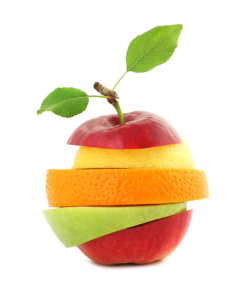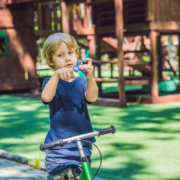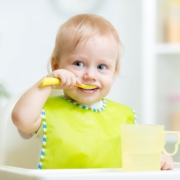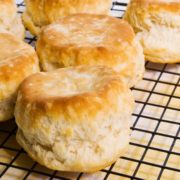Speech Therapy Activities For Toddlers
How To Do Speech Therapy At Home
As a pediatric speech-language pathologist I see kids in their home environment with parents/caregivers present for speech therapy. I’m excited to share 10 speech therapy activities you can do at home with toddlers to increase their expressive language skills.
As a therapist in the home, I work on incorporating language into each family’s daily routines. What I love about being in the home is that language can be infused in all activities throughout the day. So no need to cause extra stress for you; you are doing enough each and every day. Soon your child’s expressive language skills will blossom.
You may not even realize it but you are actually doing speech therapy with toddlers all throughout the day. Whether it be from singing songs to folding laundry to taking a walk outside. There are hundreds of opportunities each day for your toddler to learn new words and vocabulary.
Make sure to provide as many opportunities as you can to have your toddler talk to/with you, listen and give them time to finish their words, look at books together, allow them to fill in the words to songs/phrases, and talk about what you are doing all day.
Why do Speech Therapy At Home
I never want parents to think they have to sit down and have a structured speech therapy session when I leave. Most of the families I work with are juggling appointments such as therapy, doctor, specialist, siblings, family schedules, etc. They really need to be able to incorporate language into their natural daily routines.
What I love about being a therapist in the home environment is that I get a real view of family life. As an in-home therapist, you the dynamics that play a role into making each family’s day.
I get to see how parents are balancing family, schedules, siblings, while still keeping up with the daily grind of just making it through the day. It also gives me an idea of what is doable and what is not in regard to therapy follow up for the week.
I also see what each family can realistically do and what may feel just simply impossible to do with toddlers. Of course, I am not a perfect therapist so I know I have given families too much a time or two.
Discussing Speech Therapy Activities with The Family
How do I know this? Because I once was given sensory activities to do with my own child and it was hard to keep up with everything else we had going on. It has to be implemented at home to work but it also has to be realistic with what the family can actually fit into their schedule.
We discuss activities, the family’s wants/needs, and then together we sit down and come up with some activities for the week to work on. This is so important because kids learn language best when in a natural setting. Toddlers thrive in context and face to face communication during daily, repetitive, and familiar routines/activities.
So many great language learning experiences can happen while eating, playing, doing laundry, going for a walk, swinging or playing in the yard, running around the house with siblings, going to the store, bath time, bedtime, etc.
If you are a parent of a toddler that receives speech therapy in the home then I hope this list helps you. I’m also giving you a big fist pump as I know you have a lot to juggle. But somehow you all do it with such grace.
I hope you can find relief knowing that you are doing enough each and everyday. You are your toddler’s BEST teacher.
10 Speech Therapy Activities for Toddlers to Improve Expressive & Receptive Language Skills
Affiliate links are used below, which means we may earn a small portion from the sale. There is no cost to you to use the links, but they do help support this blog.
Sing songs Row your boat, itsy bitsy spider, twinkle little start, Old McDonald and make sure to use gestures. Toddlers use gestures first then words come. Make sure your child can imitate the gestures with the song first. Once they can do that move onto pausing for one word at the end of the phrase and wait for them to fill it in. If they don’t use the word then just give them the word and keep trying.
Use Signs such as baby signs. For toddlers that do not yet have words using signs is huge as it gives them a way to communicate for the time being. Signs also greatly reduce frustrations and possible tantrums. Always say the word with the sign. If you show your toddler the sign for “eat” and they don’t imitate it then you quickly take their hand and do the sign for them. This is called hand over hand and it helps them learn how to do the sign themselves. Soon they should be able to use the sign on their own. Eventually the sign will fall off and your toddler will be using the word.
Hold objects at your mouth when labeling them. When babies are developing language skills they start to watch their caregiver’s mouth move while they are talking. This helps babies and toddlers learn how to move their mouth for speaking too. So, hold up objects at your mouth when you label them and make sure your toddler is watching/looking at you.
Speech Therapy Activities Continues and Don’t Forget To MOVE
Establishing joint attention is one of the very first foundation skills I work on in speech therapy. Joint attention is when your toddler is looking at you and engaged. If they are not looking at you then they are not able to focus on what you are saying therefore they are not participating in the communication exchange. Early on I call the child’s name and wait for them to look at me before starting to talk. When singing songs I use movement and when the child looks away I pause and wait for them to look back before singing again. This helps them learn their part in the communication exchange as well as maintain attention to learn language.
MOVEMENT MOVEMENT MOVEMENT. I cannot stress this enough. Toddlers love to move and movement helps facilitate speech and language skills. It helps to increase attention and maintain attention too. Especially if your toddler has specific sensory needs movement will help them maintain attention and be able to focus on learning new language skills.
I love to incorporate movement by pulling toddlers around on a blanket to complete a more structured task like simple puzzles or books. I’ll have the toddler pick a puzzle piece then I pull them on the blanket to the puzzle board so they can put it in. If it’s an animal puzzle, then we sing a short song with the animal sound while pulling. Maybe you don’t have a blanket to use, then just have your toddler go pick up a puzzle piece and run back to you and the puzzle board to place in.
When working on Old McDonald song, then I bounce them on my legs and stop of the /o/ in EIEIO. If you are on the playground, try the swing or slide to work on ready.set…..GO! The target word would be /go/ in this activity.
Peek-A-Boo Never Gets Old
Peek-a-boo. What toddler doesn’t like peek-a-boo? This is a great activity that siblings can play together. For younger toddlers you can put a light weight blanket or wash cloth over their eyes and pull it off when you say BOO! I like to sing “where is (name of child) where is (name of child)…Peek….ahhhhhhh…BOO! I’ll pull off blanket first then after about the 5th time I wait to see if they will pull it off. Once they are doing that consistently then I’ll pause and wait for them to say BOO! Siblings can also hide and find each other and when your toddler is found make sure to say BOO! Then let them find you!
Use Books
Books. Books are great but toddlers have a short attention span and some just aren’t ready to sit and listen to a whole story or even go through five pages. It’s totally okay. Start small, even if you get through one page at first. As a pediatric speech-language pathologist I prefer the board books that have one picture on each page when starting out.
This way there is no other stimuli on the page for the child to have to block out and they can focus on one object to learn. Farm animals or book of familiar, daily objects are great to start with. Work on simple saying the animal’s name or sound and patting the animal or object. Do hand over hand to have your toddler pat picture as you say the name or sound.
I also like to sing “the cow says moo the cow says moo every animal makes a sound the cow says moo”. Just change the animal and sounds to fit the one you are looking at. We may pat the picture or move back and forth while we sing. You can also play peek-a-boo and hide the animal with your hand. When you lift your hand up say the animal’s name! Toddlers love this. See if they will take a turn too. I love books that are simple and repetitive like this ONE and this ONE.
A lot of parents ask me what my thoughts on iPad and iPhone usage are in regard to helping language skills.
I prefer face to face communication and you can hear more about why right HERE. But I will say that I do use the iPad for toddlers that would benefit from a technique called video modeling. I have used this with a number of my kiddos that are on the autism spectrum or have motor planning difficulties.
It’s amazing and really allows them to focus on learning skills from playing to producing sounds for syllables and words. Also, if parents really want to use the phone or ipad then I recommend making it interactive. Use facetime or video on your phone and talk to your toddler this way. This way your toddler is still learning the rules for communication.
You can also make funny faces and see if your toddler will imitate them. You can make sounds, sing songs, play peek-a-boo, etc and have them take a turn. Imitation is an early skill that toddlers will use when first learning language skills.
No Pressure Zone
Do not pressure your child to talk. Have you ever tried to get your toddler to say a word and you keep saying “say ___” over and over and they just look at you like you’re crazy or they may even walk away? A lot of toddlers will feel pressure and actually shut down when it’s placed on them to speak. Sometimes as parents we feel the need to say something over and over and we fail to recognize that toddlers need time to process what we are saying.
When they have to figure out how to get the message from their brain to their muscles to produce the words. Also, a toddler may not be ready to actually say a specific word yet so giving them time to process helps. Also, giving them another way to communicate helps such as giving them a sign with the word or showing them the object such as milk (plant based of course :)) and saying “oh you want___ (pausing and pointing to milk).
Even modeling the initial sound of the word /m/ for milk and seeing if they can just imitate that sound. Then you can work on the rest of the sounds in the word once they have mastered the initial sound.
Expanding on What Your Child Is Already Doing
Expand on their gestures or words. Maybe you have a toddler that lifts her arm up and says “uhuhuh” and whines. You may know your toddler wants you to pick her up. Instead of picking her up immediately try giving her the word first “UP! ” then saying “you want UP”! and pick her up. What about when your toddler is absolutely done with their meal and wants to get down from their highchair?
Does she try to climb out and hang her body over the side? Mine sure has done that! You can say “down” “lets get down” and take her down. If you have a toddler that has one-word utterances, then expand on those. For example if your child says “juice” you can say “juice please”. When they say “mama” and lift their arms to you then you can say “mama up”.
With the kids being home now more than ever you may want to check out my blog post RIGHT HERE . I use some of these techniques such as the visual schedule with my toddlers in speech therapy too!
Please comment below with your favorite activity and please tell us how your little one is thriving!













Hi nice website https://google.com
спасибо интересное чтиво
_________________
букмекеры на шахтеров
Excellent post. I was checking continuously this blog and
I’m impressed! Extremely useful info specifically the last part :
) I care for such information a lot. I was seeking this particular information for a very long time.
Thank you and good luck.
Thanks so much!